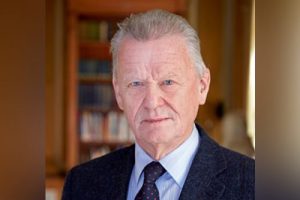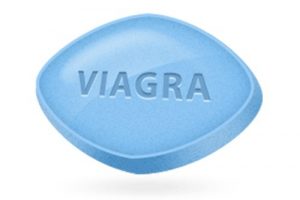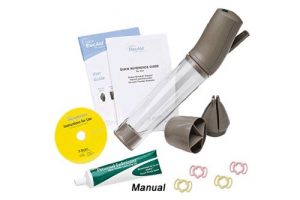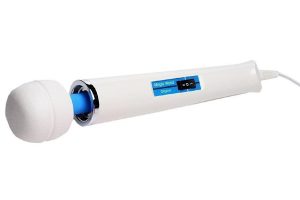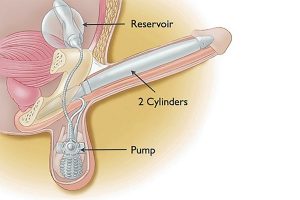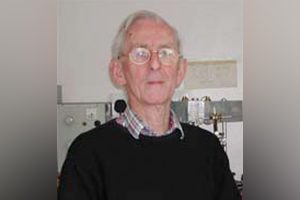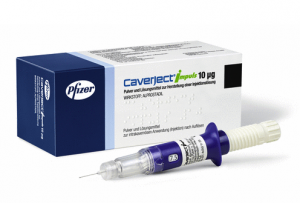Simon Fraser Campbell (1941- ) was awarded a knighthood in the 2015 New Year’s Honours List for services to chemistry.
Unless you happen to be a medicinal chemist, you might not have noticed, but this is the man who discovered the major breakthrough drugs Istin amlodipine and Cardura doxazosin for the treatment of high blood pressure. But, above all, he should be famously remembered as the legendary scientist who nurtured sildenafil citrate for 13 years before its volcanic eruption into the public arena as
That was precisely 20 years ago.
50 years ago, we could offer little in the way of hope for the impotent man. Blood levels of testosterone could not be measured routinely, and its supplementation was made by random trial and error. External vacuum pump devices had not been invented.
Purportedly erectogenic medications, jungle juices such as yohimbine and Spanish Fly, were quite frankly poisonous. The ancient Chinese cock ring could garrot. Men had not yet considered using girls’ vibrators.
The plastic, hydraulic, inflatable penile prosthesis was first described in 1973: its insertion involves a complex surgical procedure.
And then, in 1982, one Ronald Virag (1938-), a French cardiovascular surgeon with a special interest in andrology, wrote to the editor of The Lancet. He had stumbled over a novel technique for treating erectile dysfunction. Knowing the vasodilatory effects of papaverine (yet another alkaloid of the opium poppy), he had injected a small dose into the penis of an anaesthetised patient to check that a revascularisation operation had been successful – it had been.
Meanwhile, a perilously daring eccentric, but fundamentally brilliant, lateral thinker, Giles Brindley – British neurophysiologist, musicologist and composer – had been experimentally self-injecting a variety of smooth muscle relaxants. He had found a number of efficacious substances, papaverine included.
Professor Brindley was invited to speak at the 1983 American Urological Association conference at Las Vegas on “The Physiology of the Penis and the Treatment of Erectile Impotence”.
The 18 April 1983 was a night to remember.
The evening lecture was to be given in the host’s hotel ballroom. Before Brindley’s podium was ranged an international audience of distinguished middle-aged urologists with their partners, all dressed for their imminent gala dinner. His “hypothesis that injection of vasoactive agents into the corpora of the penis might initiate an erection” was described in detail. He apologised that there were no appropriate animal models, and that his own penis was, therefore, the subject of his 30 illustrative slides. Should any doubt still exist as to the efficacy of his technique, he explained that he had previously self-injected papaverine. He pulled down his track suit bottoms to demonstrate.
“There was not a sound in the room. Everyone had stopped breathing”.
Professor Brindley waddled down to the front row – “I’d like to give some of the audience the opportunity to confirm the degree of tumescence”.
“Some members of the audience screamed loudly and waved their arms”. Overcome by intuition, he wrapped.
Giles Skey Brindley (1926-) was awarded a knighthood in the 1986 Honours List for bioengineering research (unconfirmed).
His instigation of probably the most hilarious moment in the history of modern medicine was typical of his total lack of self-consciousness. But, Brindley is deeply revered by his colleagues, not the least for his work on the physiology of the retina and his efforts to develop an electronic prosthetic eye. He is a disciple of Schoenberg, and invented a successful electronic bassoon. He was an early member of the Cambridge cybernetic Ratio Club in the company of Turing, Barlow, Slater, Walter and Westcott.
Giles Brindley is not to be ignobled.
Intracavernosal self-injection became the first line treatment for erectile dysfunction, particularly following the stabilisation of the vasodilator alprostadil by freeze drying in 1995, giving rise to today’s Caverject.
Quickly, the enormous worldwide market for amenable and demonstrably effective erectogenic treatments became manifestly evident.
By rule of thumb 50% of men over the age of 50 will have significant erection problems.
The American world supergiant pharmaceutical company, Pfizer, was not unaware of the published papers of Virag and Brindley.
Simon Campbell, Pfizer’s senior research scientist, had been quietly investigating a potentially effective oral agent for the treatment of angina, heart pain. It became evident that, as a dilator of coronary arteries, compound UK-92, 480 was not going to be another medal winner – which was an expensive disappointment – but….
There were some reports from initial clinical trials that the “human male participants”, despite troublesome adverse reactions such as headache, indigestion and facial flushing, had purportedly experienced “significant enhancement of erectile capability”. They were deeply unhappy to relinquish their new found magic bullet: Campbell twigged.
Ronald Virag, having been appointed consultant at Harvard Medical School, was involved in the early European trials of compound UK-92, 480, and it was through his encouragement that Pfizer determined wholeheartedly to back Simon Campbell and his team in its Central Research Establishment at Sandwich, Kent.
Compound UK – 92, 480, which now could be named as sildenafil citrate, was approved for use in erectile dysfunction by the US Food and Drug Administration on 27 March 1998. For the market it was branded “Viagra”.
Why “Viagra”? Some argue the name was suggested by the Sanskrit word vyaghra, meaning tiger – others, a play on vigour, virility, vitality, Niagra. But no – we have to look to its ardent supporter, Ronald Virag, whose enthusiasm had been vital in Pfizer’s decision to back the hunch that “compound UK – 92, 480” could be a winner.
By 2016, Pfizer’s annual revenue from Viagra was $1.564 billion.
The little short of miraculous invention of Viagra sildenafil (1998), along with its small tribe of more sophisticated sub species, Cialis tadalafil (2003), Levitra vardenafil (2003) and Spedra avanafil (2012), will successfully treat approximately 60% of erectile dysfunction complaints.
If they are that good then, why not 100%?
In 1998, the Wellman Clinic quickly proved the point that an adequacy of testosterone needs to be present to achieve a significantly more reliable result. Other equally important pathologies obtrude on efficacy, not the least being damage to the essential arterial blood supply caused by cholesterol and sugar.
We also need to recognise clearly that erection difficulties are commonly associated with significant life-threatening cardiovascular disorders requiring urgent treatment.
Viagra and its relatives are often simply rather too convenient sticking plasters.
- * * * * *
The Simon and Jill Campbell Foundation funds undergraduate scholarships in mathematics, physics and chemistry at Cambridge and Birmingham Universities. Sir Simon Campbell along with his wife were elected Lady Mary Beaufort Fellows at Christ’s College, Cambridge in 2001.
- * * * * *
The WellMan Clinic was granted the first UK licence to import Viagra, and received its initial order from Pfizer on 10 May 1998, the two invaluable tea chest sized crates were secured in the strong room of Harrod’s Bank. My curious bank manager wished (perhaps needed) to know their contents. He was pleased to receive some samples. Motorcycle couriers delivered our daily stock. International and UK news programs and journalists hassled for interviews. The brouhaha lasted 18 months, during which time the world of men’s health was changed beyond its wildest imaginings.
In July 1999, after much acrimonious debate, Viagra became available to the NHS, with severe restrictions on its prescription.
-
- * 2018 IS VIAGRA’S 20th ANNIVERSARY
- * 2018 IS THE WELLMAN CLINIC’S 35th ANNIVERSARY
- * 2018 IS THE 70th ANNIVERSARY OF THE NHS


